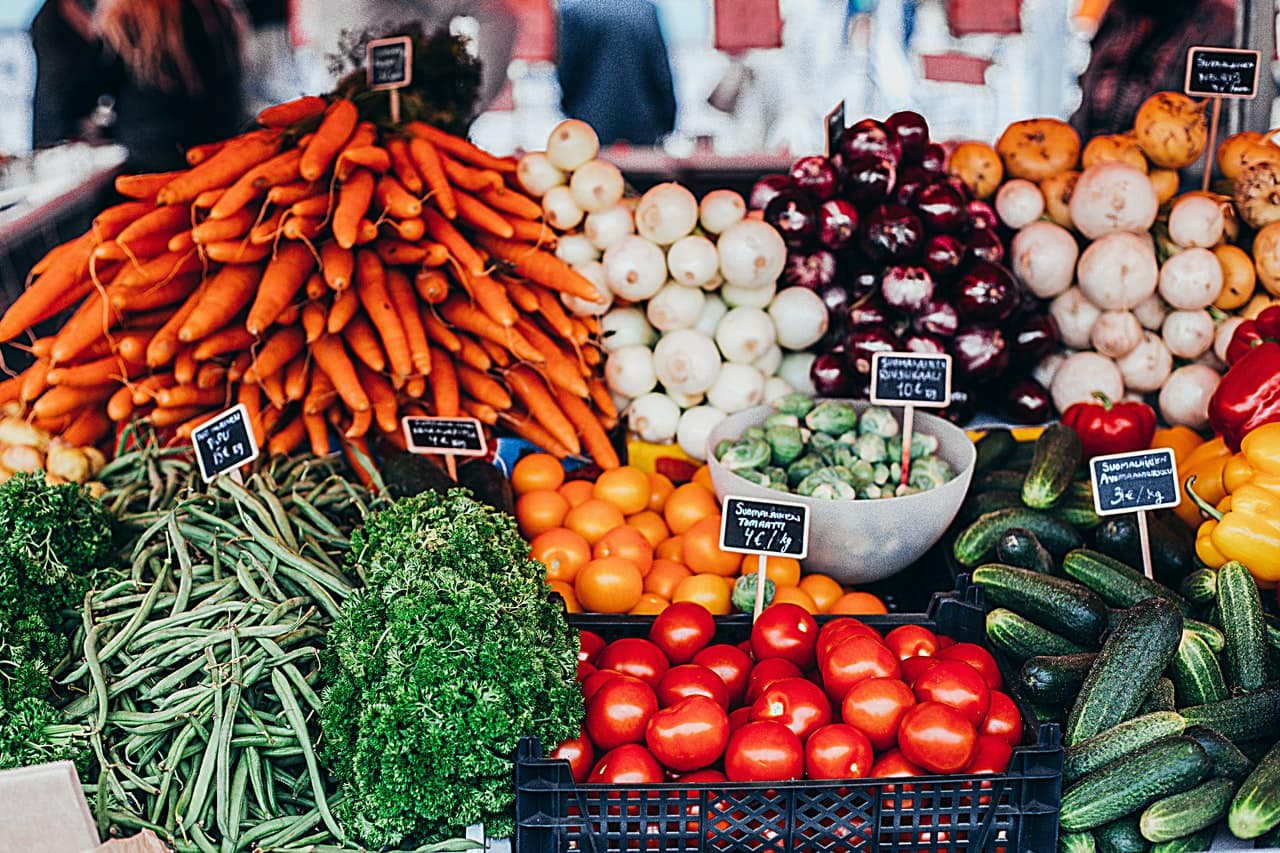
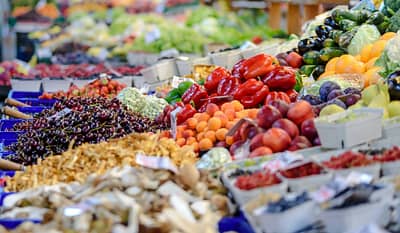 I love to try new recipes, exploring unique ingredients and different ways of combining familiar ingredients. But just as often, I like to go to the grocery store, gather up any produce that catches my eye and bring it home to combine with pantry staples – making dinner by cooking without a recipe. Sometimes these improvised dishes are mediocre, we eat them, but without much glee. Much more often thought, they are delicious and I regretfully tell Adam to really enjoy them since I will never be able to recreate it exactly again.
I love to try new recipes, exploring unique ingredients and different ways of combining familiar ingredients. But just as often, I like to go to the grocery store, gather up any produce that catches my eye and bring it home to combine with pantry staples – making dinner by cooking without a recipe. Sometimes these improvised dishes are mediocre, we eat them, but without much glee. Much more often thought, they are delicious and I regretfully tell Adam to really enjoy them since I will never be able to recreate it exactly again.
While I do have a knack for understanding what will go together and the best way to prepare each item in order to make a complete meal, there are a few simple tricks you can use to make cooking without a recipe both easy and delicious.
First, why I cook without a recipe
Sometimes I will plan the four or five recipes I want to cook during a week (Adam and I are happy to eat leftovers as both lunch and a second dinner during the week). I will go to the grocery store with a long list to gather all the ingredients to make each dish. Then I will stand in the produce aisle looking longingly at the beautiful broccoli, robust summer squash, or plump brussel sprouts that are not included in my recipes for the week. Instead, I sadly select a slightly bruised eggplant or a just starting to soften bell pepper that I need to complete my meals.
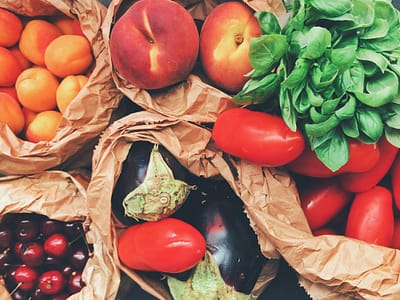 When I cook without a recipe, I can buy whatever looks freshest and/or is on sale that week. This is also a great technique if you frequent a farmer’s market or subscribe to a CSA (community supported agriculture) box from your local farmer. In either case you have no idea what you will get each week, but you are guaranteed that whatever produce you receive will be seasonal, fresh and delicious.
When I cook without a recipe, I can buy whatever looks freshest and/or is on sale that week. This is also a great technique if you frequent a farmer’s market or subscribe to a CSA (community supported agriculture) box from your local farmer. In either case you have no idea what you will get each week, but you are guaranteed that whatever produce you receive will be seasonal, fresh and delicious.
Cooking this way also means I am spending less time tracking down ingredients that can be hard to locate. Sometimes I end up going to multiple grocery stores searching for the last ingredient for a recipe that is either out-of-season (i.e. peaches in winter) or just not common in my local stores (i.e. bok choy or napa cabbage). Or I need to put in an online order from a specialty store and wait for delivery of a specific spice, grain, or other item to make a particular dish.
Finally, cooking without a recipe is a great way to be creative. It encourages me to be fully present while I am cooking. I depend on my sense of taste and smell while picking ingredients and adjusting seasonings. Without a cook time from a recipe I need to turn to visual and textural cues – does it look and feel right. Cooking without a recipe is fun and helps bring me into the present moment because of the need to be mindful to the process – it is a great way to transition from a busy day to a relaxing evening.
Pantry staples are essential
In order to easily cook without a recipe, there are several pantry staples I always try to keep on hand: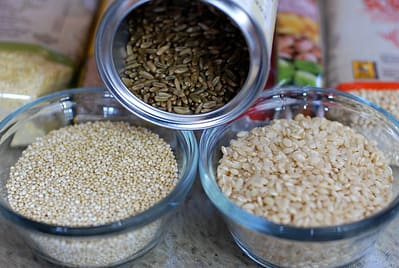
- Dried grains (quinoa, barley, millet, brown rice)
- Boxed pasta (I love the Jovial brand of gluten-free pasta – it has an amazing texture both hot and cold making it versatile for warm dishes and cold pasta salads. Usually there are also several package of Asian rice noodles in the pantry – I like the Three Ladies brand)
- Tortilla chips (I prefer organic for these, but have no preference on white/yellow/blue corn – I usually get whatever is on sale or looks good to me on the day I need more)
- Dried and/or canned beans (I am a big fan of the Rancho Gordo dried beans, but I also usually keep a few cans of chickpeas on hand)
- Canned tomatoes (I usually have a selection of diced and crushed as well as fire-roasted and just plain tomatoes)
- Frozen peas and frozen corn (while I usually prefer to use fresh produce, frozen peas and corn kernels are much easier to get ready than fresh and don’t have an appreciable loss in taste/texture the way other frozen vegetables can when cooked)
- Olives, capers, chipotle in adobo (these salty, spicy, briny option are great for adding pops of flavor to a meal as well as incorporating into sauces)
- Peanut butter, tahini, sesame oil, olive oil, rice vinegar, apple cider vinegar, tamari/soy sauce, sriracha, hot sauce (these all go into making the sauces that bring everything together)
- Assorted dried herbs and spices (I have a huge selection of herbs and spices, but you will learn what you use most and need to keep just those on hand)
- Nutritional yeast and/or cheese (if you eat cheese and are not already aware, you can keep hard cheeses in the freezer for longer-term storage – this enables me to buy our go-to cheese of sheep’s milk pecorino romano in bulk, and keep only what I will eat during a week or so in the fridge)
- Protein that works for your diet (eggs, tofu, tempeh, frozen fish, frozen raw shrimp, frozen chicken)
- Nuts and seeds (I prefer raw/unsalted/unroasted with the exception of peanuts which I like to get roasted and lightly salted)
There are three general types of cuisine that I turn to when preparing meals without a recipe – Mediterranean, Asian, Mexican. These are the cuisines where I have a high comfort level with the flavor profiles. They are also cuisines where a lot of the fresh produce can be interchangeable – for instance, zucchini, mushrooms or red bell peppers could go into an Asian stir fry, a Mediterranean pasta dish, or a fajita filling.
Have a couple of go-to sauces/spice blends
When cooking without a recipe, most of my meals use one of a few go-to sauces. I don’t measure ingredients, and I make substitutions based on what I have on hand, so they are never the same twice, but here is a basic overview of my sauces: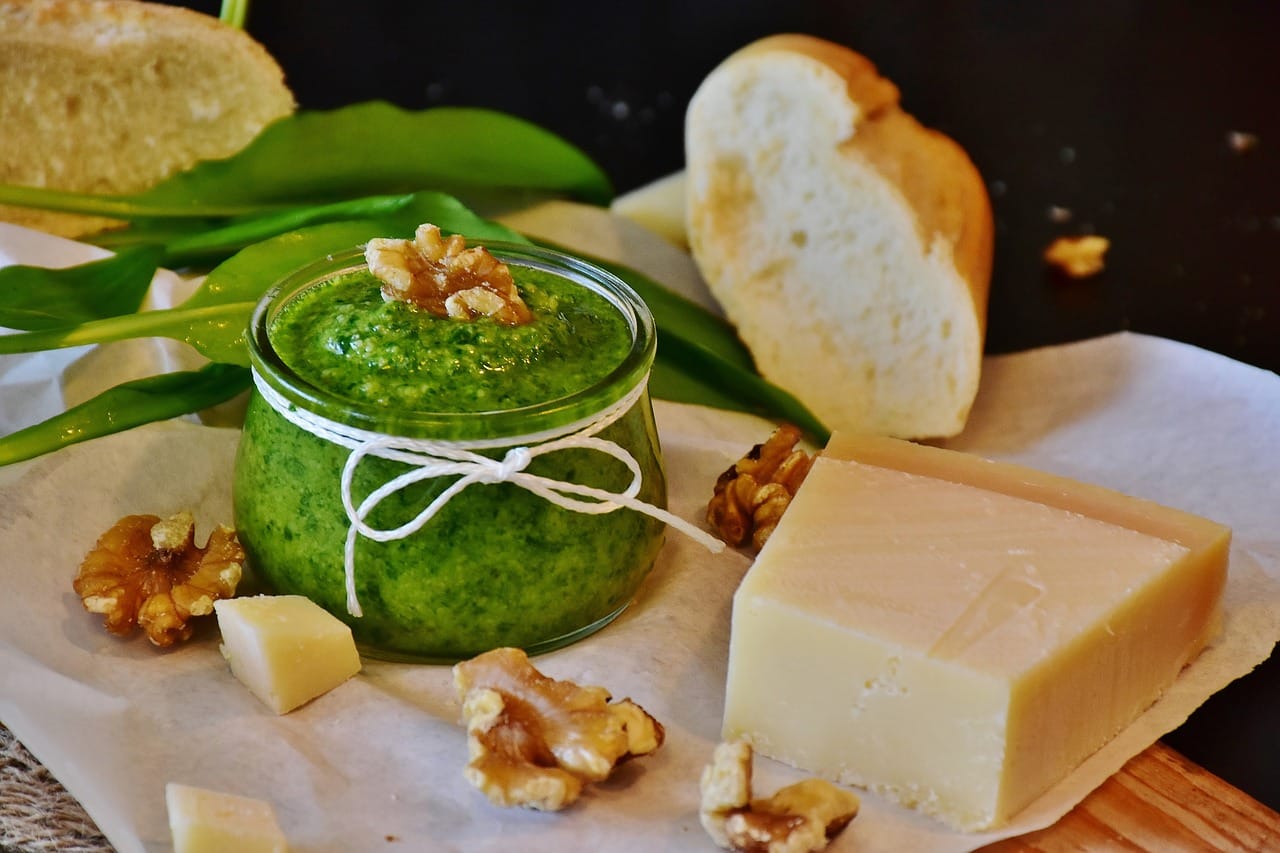
- Pesto – you can make a pesto out of any greens, not just basil. I will use alone or in combination: spinach, kale, swiss chard, arugula, beet or radish tops, chives, or any mixture of fresh green herbs. I process the greens in a food processor with some olive oil, sea salt/pink Himalayan salt, cheese/nutritional yeast, garlic, and nuts/seeds. You can also use any nuts/seeds you like – they do not have to be pine nuts. I use walnuts, pistachios, sunflower seeds, pumpkin seeds, macadamia nuts. If you are unsure what goes together, take a little nibble of anything you are considering adding together to see how they taste. I usually also season to taste once blended with a little pepper. (This sauce is usually added after everything else is cooked.)
- Asian peanut sauce – combine peanut butter, tamari/soy sauce, grated garlic, fresh grated ginger if you have it (you can also buy in bulk, grate and freeze ginger in ice cube trays for future use), coconut sugar or honey, acid (lime juice, rice vinegar, lemon juice), sesame oil, and siracha. Add hot water to thin the sauce and make it easier to mix. At least half of the sauce should be peanut butter (often much more than that), check for recipes online or start adding a little of each ingredient to the peanut butter, tasting as you go and adjust until you get what works for you. Rarely do I add in all of the above ingredients, I will usually grab whatever feels like it will go best with the produce I am using and/or what I have on hand. I will often top meals using this sauce with chopped roasted peanuts. (This sauce is usually added after everything else is cooked.)
- Asian stir-fry sauce – I rarely mix this sauce separately, usually I add the ingredients in as I cook the meal, however, as you are getting started, you might want to prepare it in advance so you can taste and adjust it until you are more comfortable with quantities. I use minced or grated garlic and fresh ginger, tamari/soy sauce, rice vinegar/lime juice, fish sauce, coconut sugar, peanut oil or sesame oil (always add sesame oil at the end, don’t cook it). I often top these meals with sesame seeds, spring onion and/or cilantro for serving.
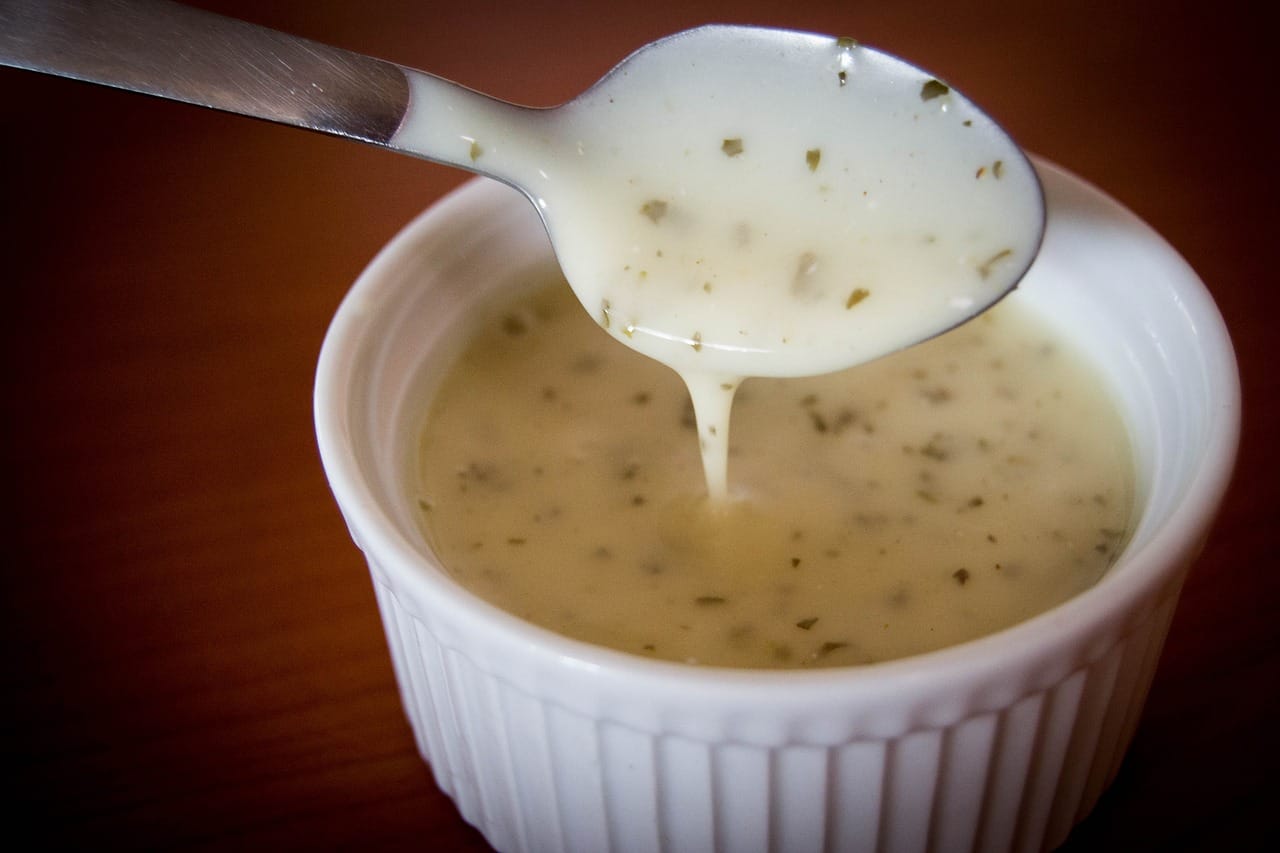
- Lemon vinaigrette – in the mixing cup that came with your stick blender (or just a glass measuring cup), combine approximately two parts lemon juice to one part olive oil. Add in salt, pepper and any herbs and spices you would like. If you like raw garlic, roughly chop a few cloves of garlic and toss them in. You can also add in capers and/or olives. Zest your lemons before juicing and add the zest to the sauce to get an extra punch of lemony flavor. Use your stick blender to emulsify the dressing – it will become creamy. Taste and adjust your seasonings – re-blend if necessary. (This sauce is usually added after everything else is cooked and I prefer it on room temperature or cold dishes.)
- Tahini sauce – combine tahini, lemon juice, grated garlic (or roughly chop if you are thinning sauce enough to blend), salt and pepper. Add a dash of maple syrup or honey and hot water to thin sauce and make it easy to mix. (This sauce is usually added after everything else is cooked.)
- Mexican spice blend – I like to season my Mexican dishes with a mixture of oregano, cumin, chili powder, garlic and/or onion powder, and paprika. I will also add in either chopped chipotle in adobo or just a little spoonful of the adobo sauce depending on how much heat I am looking to add. I add these spices to the vegetable and/or protein while cooking so they combine with the liquid released during the cooking process to create a thick sauce.
- Quick tomato sauce – mix diced or crushed tomatoes with a few pinches of Italian seasoning (or your own combination of basil, oregano, thyme, onion powder, garlic powder, red pepper flakes, salt and pepper). Add the sauce to your dish as it is cooking, or warm it in a pot before adding to cooked ingredients.
Putting it all together
You have your pantry staples, your fridge is filled with fresh produce, and you have guidelines for preparing your sauces. How to do you take it all and make dinner?
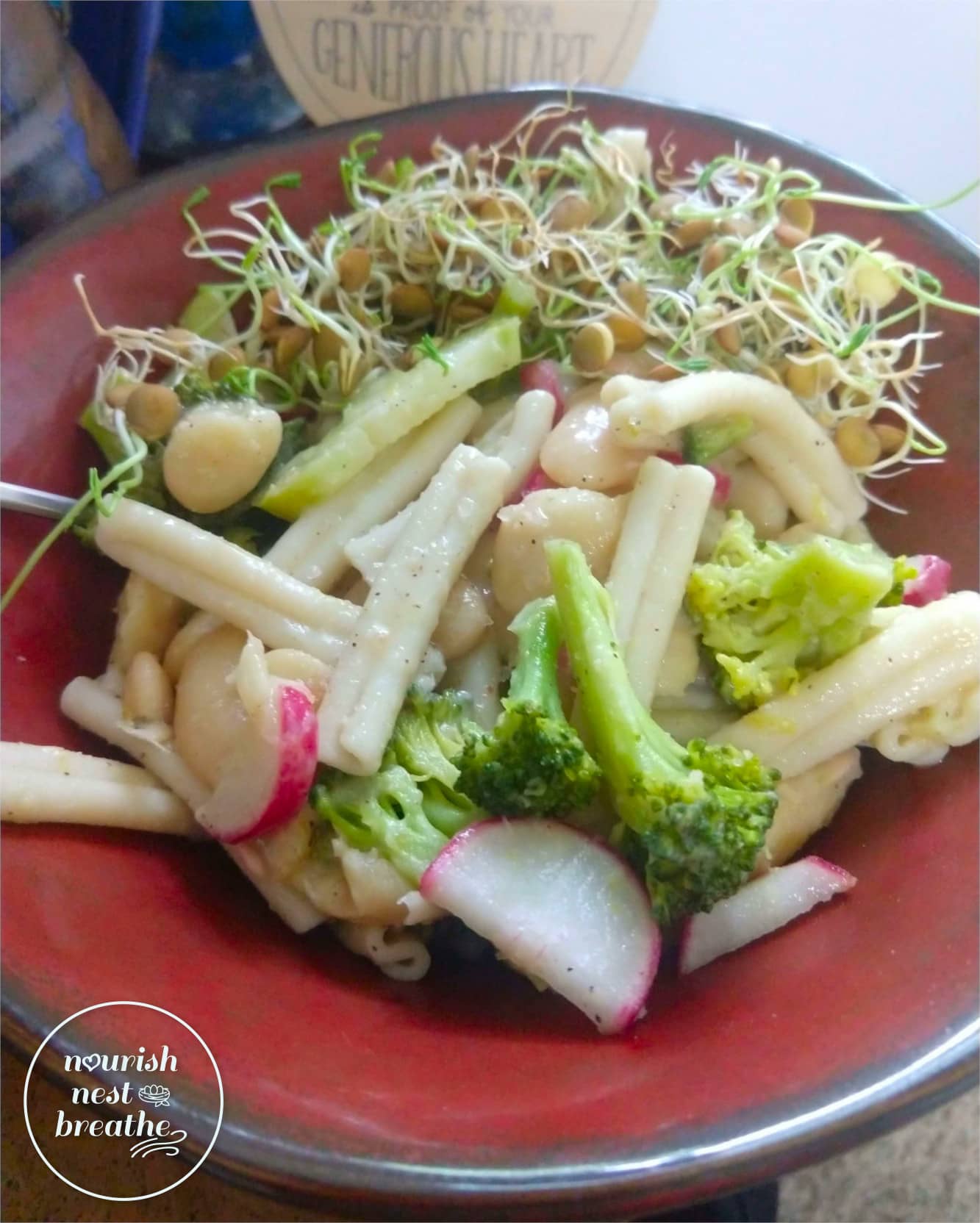 Pasta salad – Jovial noodles, radishes, lentil sprouts, Rancho Gordo white lima beans including some cooking liquid, broccoli florets and stems steamed over cooking pasta, and dressed with a lemon vinaigrette.
Pasta salad – Jovial noodles, radishes, lentil sprouts, Rancho Gordo white lima beans including some cooking liquid, broccoli florets and stems steamed over cooking pasta, and dressed with a lemon vinaigrette.When cooking without a recipe, it is best to plan your dinner in the morning in case you want to cook dry beans or need to defrost your protein in advance.
Start with your produce. What needs to be used up tonight? Do you have greens that are starting to wilt, or maybe your bell peppers aren’t looking as fresh as they did when you brought them home. Identify whatever should be cooked first. Then find enough produce to complement it to create the bulk of your meal.
Next is the tricky part, identifying what the theme of your produce is as well as what sauces you are able to make with the ingredients you have on hand. For instance, if tonight you want to cook an eggplant, two red bell peppers, a few zucchini, and an onion, you could either take it in the direction of an Asian stir-fry or make an Italian pasta bake with a quick tomato sauce.
Ok, you have gotten through the tricky part – next decide your protein. Using the example above, maybe you went Asian stir-fry and you want to add some cubed tofu or tempeh to the stir-fry. Or perhaps you went with the Italian pasta bake and want to add in white beans or shredded chicken. If you are cooking beans, add them to the slow cooker early enough they will be ready in time to prepare dinner. If you need to defrost a protein, be sure to transfer it to the fridge with time to defrost before dinner.
Actually making the meal is the easy part! Prep your veggies and cook your grain. For the Asian stir-fry, I might serve it over brown rice if I was starting early, or Asian rice noodles or quinoa if I only had 30 minutes to get dinner on the table. With the Italian pasta bake, cook up your noodles in advance before mixing with veggie, cheese and/or sauce, and baking. Prepare your veggies and protein in whatever manner is best suited for cooking them and/or for the dish you are preparing. Mix up your sauce and add at the appropriate time. Do any additional cooking/baking, sprinkle on any toppings and serve.
So I read all of that, but I’m still not sure how to start
 I get it, not everyone is comfortable in the kitchen without a recipe. Start by reading recipes or thinking of your favorite dishes. Examine what types of ingredients are combined together. What flavor profiles are you drawn to? Explore recipes that incorporate those profiles to see how others use them. Remember the old saying, what grows together goes together – this means that often what is local and in season will be easy to combine.
I get it, not everyone is comfortable in the kitchen without a recipe. Start by reading recipes or thinking of your favorite dishes. Examine what types of ingredients are combined together. What flavor profiles are you drawn to? Explore recipes that incorporate those profiles to see how others use them. Remember the old saying, what grows together goes together – this means that often what is local and in season will be easy to combine.
Think about your proportions – I like my meals to be at least half vegetables, a quarter grain, and a quarter protein. These are rough proportions (often I err on the side of extra vegetables), but they help me figure out if I should be cooking a half box or a full box of pasta, if I should be using the entire bundle of broccoli, or just one crown, or if I need to make a half-pound or a full pound of beans.
When mixing up your sauces, keep in mind that warm ingredients will soak up many of these sauces. Especially when making one of the thinner sauces, you may need to prepare more than you think to ensure you get great coverage on your meal. If in doubt, add a little at a time, most of these sauces make great salad dressing for tomorrow’s lunch if you have any left over.
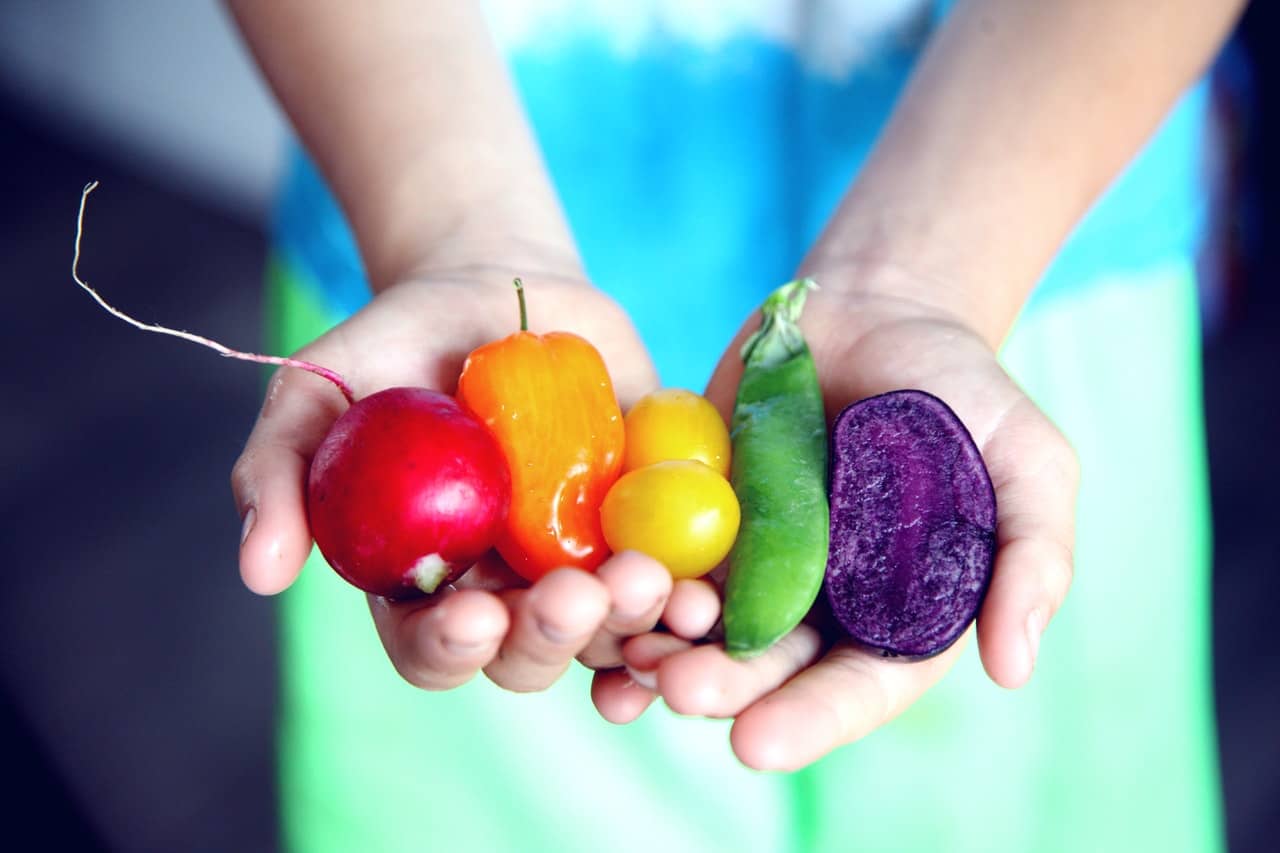 To maximize vitamins and other nutrients as well as increase visual appeal, keep in mind you want to cook the rainbow. Pick vegetables in a range of colors when preparing your meals – in the example we have been using, we have purple of the eggplant, red of the bell pepper, green of the zucchini, and a white/yellow/purple depending on the onion you use. You could also make this dish using an heirloom green eggplant and green bell peppers, but then you would be looking at a mostly green dish and it wouldn’t have the same appeal.
To maximize vitamins and other nutrients as well as increase visual appeal, keep in mind you want to cook the rainbow. Pick vegetables in a range of colors when preparing your meals – in the example we have been using, we have purple of the eggplant, red of the bell pepper, green of the zucchini, and a white/yellow/purple depending on the onion you use. You could also make this dish using an heirloom green eggplant and green bell peppers, but then you would be looking at a mostly green dish and it wouldn’t have the same appeal.
Finally, just experiment. We learn through our successes as well as our failures. I love honey mustard dressing. You will notice it is not in the list above, a successful honey mustard sauce still eludes me despite multiple attempts. However, I keep getting better each time I attempt it. And if you are looking at a fridge filled with food and don’t know where to start, hop on Instagram and send me a message – let me know what ingredients you need to use (and any dietary restrictions you have) and I will try to help you come up with a recipe.
Lynne Rossetto Kasper used to do this on the Splendid Table – she called it “Stump the Cook” and I loved listening to the creative meals she helped listeners come up with. Occasionally, my Mom will call me with our own Stump the Cook challenge and I will help her formulate a meal based on what she has in the fridge. Once you start experimenting with cooking without a recipe, you might find that you too become the go-to person for friends and family looking for a recipe for dinner and hoping for your Stump the Cook advice!
Wishing you the adventure of a creative dinner cooked without a recipe!
Related
Leave a Reply Cancel reply
This site uses Akismet to reduce spam. Learn how your comment data is processed.